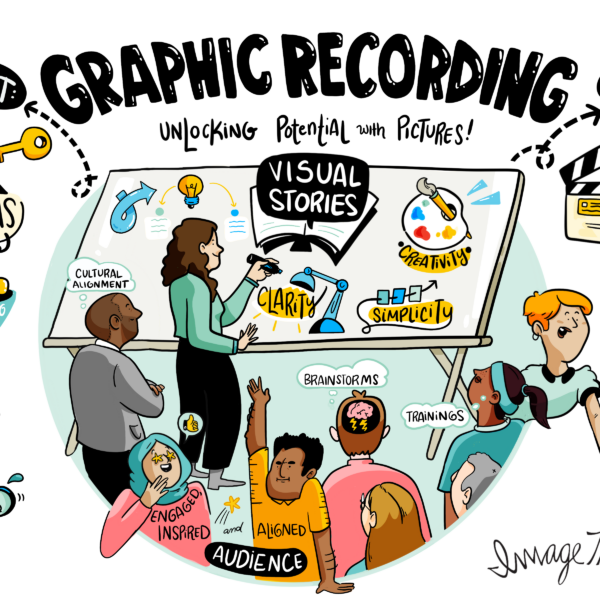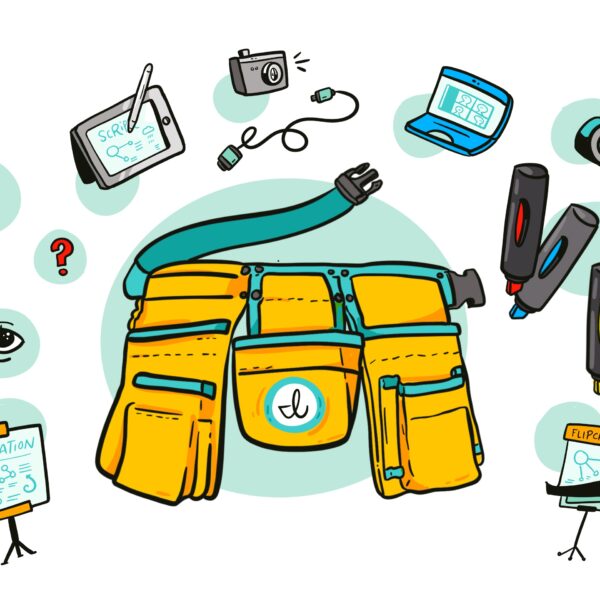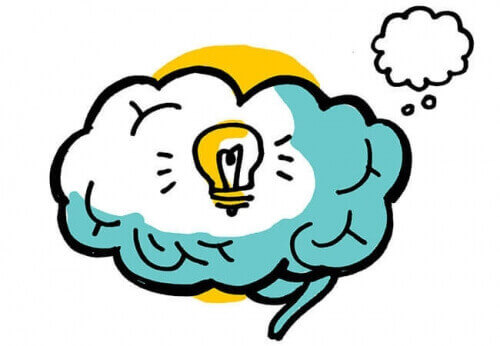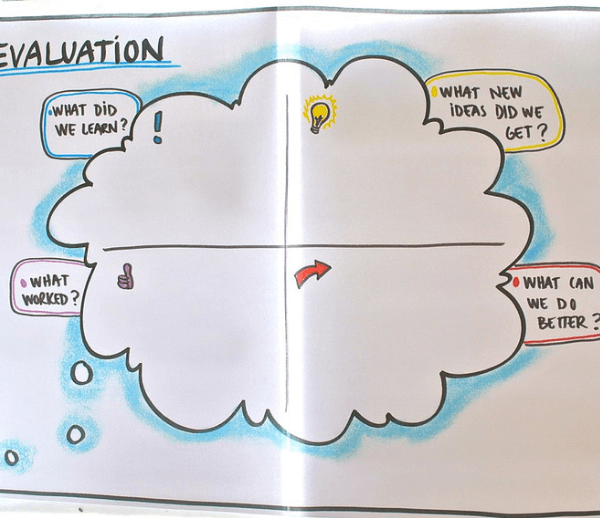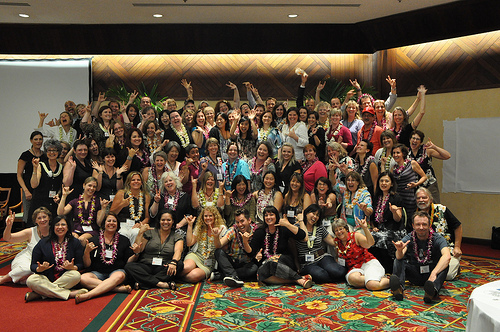What is graphic facilitation?
The terms “graphic recording” and “graphic facilitation” are often used interchangeably. It’s true that both employ a similar skillset – real time synthesis of information, drawing, and visual communication. Yet, what distinguishes the two is simple: one is the foundation of the other. Graphic recording involves visual capture, while graphic facilitation provides visual tools to actively structure and lead the conversation. Graphic facilitation is done by a graphic facilitator who incorporates capturing ideas visually through graphic recording and visual exercises to help teams think creatively, strategically, and collaboratively.
With nearly fifteen years of experience in graphic facilitation and meeting design, ImageThink knows a thing or two about what it takes to lead a meeting toward a successful conclusion. In this post we will give you a better understanding of a graphic facilitator’s skillset, and what graphic facilitation entails.
7 Key Elements of Graphic Facilitation
1. Real Time Strategy
Any graphic recorder worth their salt is an expert at synthesizing complex content into succinct points. But graphic facilitation requires turning that skill up a notch. Graphic facilitators not only capture information – they steer the discussion. By reflecting information back to the room and using it to ask relevant questions, they help move the conversation forward. Beyond recognizing key insights, graphic facilitators have the ability to identify discussion gaps, and work to explore them.
Just as importantly, graphic facilitation requires recognizing when a topic warrants further investigation, even if it means revising the meeting’s agenda in real time. That aptitude only comes with extensive experience in strategy, brainstorming, and ideation sessions, and it’s indispensable if the meeting is to be a success.
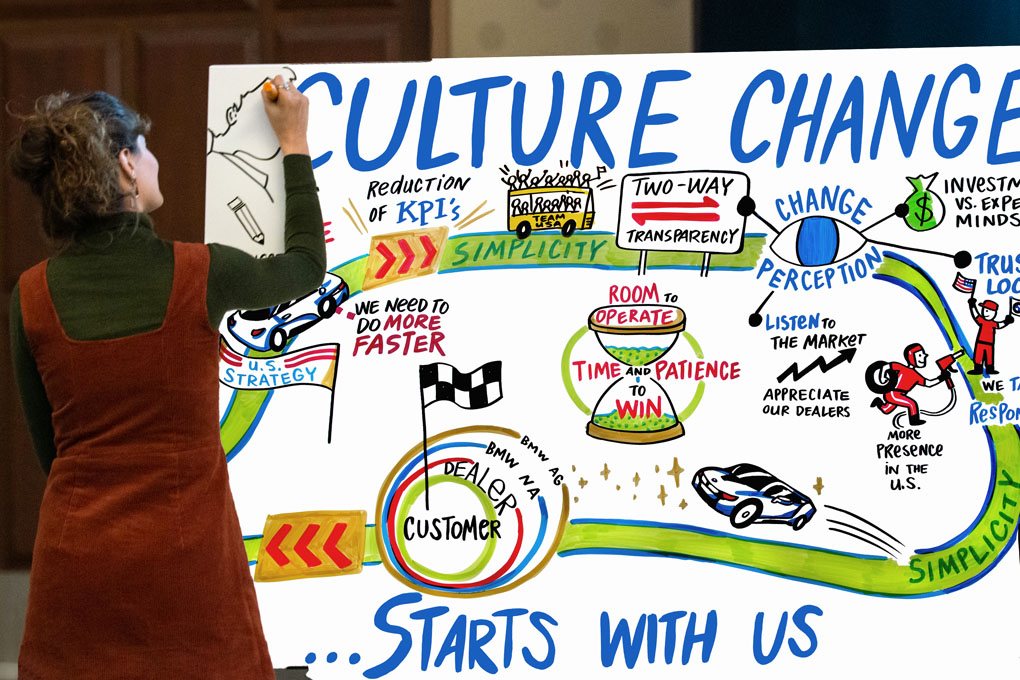
2. Reading Group Dynamics and Corporate Psychology
There are many factors that feed into a group’s unique dynamic. Who’s in the room? What is the size of the group? Is the subject matter at hand sensitive or confidential? What is the context for the meeting? A conference room filled with C-Suite executives, for instance, will create a very different discussion than a meeting mix of upper and lower management. An ideation for new product design will likely be much more animated than one examining why a product or project has been unsuccessful.
Experienced graphic facilitators know what questions to ask in order to anticipate the group’s dynamic, and to arm themselves with the tools needed to make the meeting go smoothly. From templated boards to keep everyone on the same page, to acting as a mediator if conversation becomes heated. It’s arguably the most difficult task of a graphic facilitator, which further explains its value in the meeting room.
Want a better meeting?
3. Agenda Design Prowess
Successful graphic facilitation begins long before the meeting does. A nuanced, tailored agenda created collaboratively with a client ensures that the time spent in the meeting room is spent purposefully. While certain elements can be carried from meeting to meeting, each agenda requires a thorough understanding of the client’s unique needs and objectives. When designing an agenda, understanding how one topic will flow into the next, how to maintain the engagement of participants, and how to hold attention is crucial.
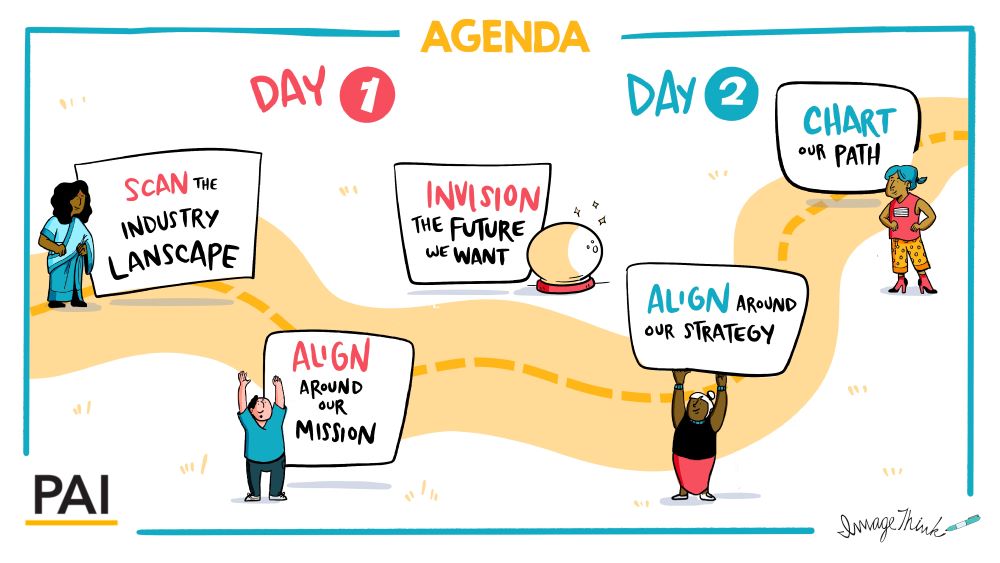
4. Knowledge of Templates and Creative Exercises
Over time, graphic facilitators develop a mental toolkit of interactive exercises, visual templates, and creative problem solving techniques for any topic or situation. But it’s not enough to know how to create a priority map or Stop/Start/Continue chart. Graphic facilitators must have these tools in their back pocket, and just as importantly, know when to use them and how to tailor them to the client’s unique objectives.
5. Grace Under Pressure
Materials don’t arrive in time. Key speakers call out sick. Technology fails. No matter how meticulous the planning or preparation is, hiccups happen. As graphic facilitators, it’s our job to not only roll with the punches but to quickly improvise a way to bring things back on track.
Part of a facilitator’s job is to be the calmest person in the room. More than just confidence; a graphic facilitator possesses the mental agility that allows for quick and creative problem solving. For some, it’s an innate quality. For most, though, it’s only learned with years of experience.
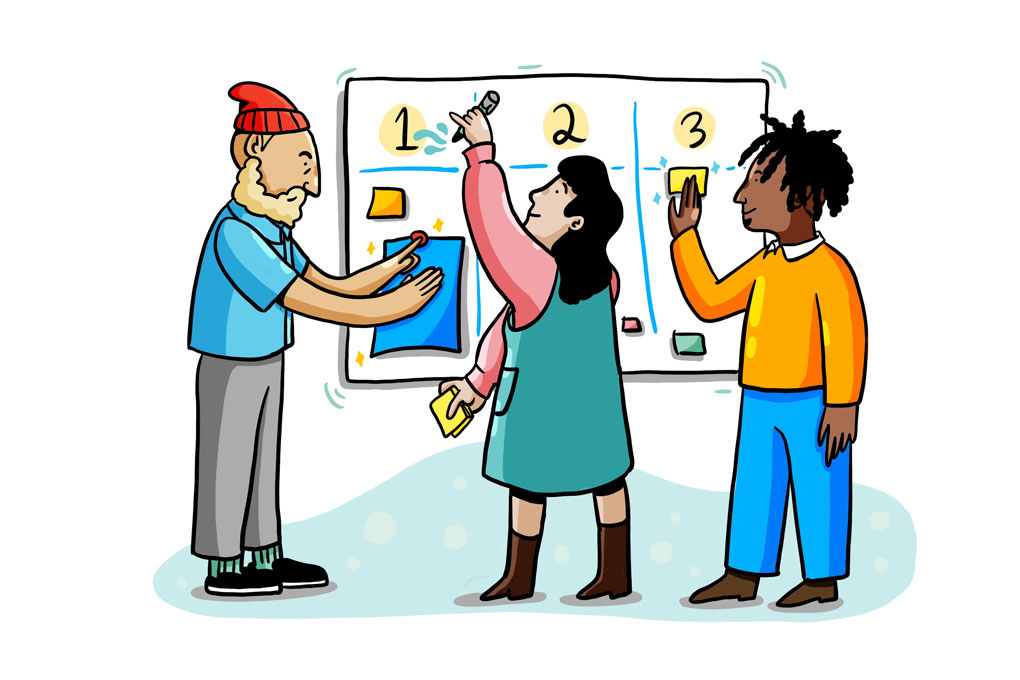
6. Full Integration with the Meeting Team
Graphic facilitation is usually carried out in support of other components of a facilitation package. For that reason, it’s not unusual for a graphic facilitator to collaborate with others to support a larger meeting.
Adept graphic facilitators will clarify what his or her role is within the context of a team, articulate what support they can provide during different parts of the day, and ask questions related to the goals of the meeting. There should be an active and ongoing level of presence in the room, marked by curiosity and the ability to be flexible with changing meeting dynamics.
7. Knowing What Comes Next
A meeting is only as successful as the next steps it generates. Graphic facilitators ensure that by the time the meeting wraps, concrete action items are identified and if possible, owners and due dates are assigned. They also help move the client’s team or organization forward with a post-event session summary, or by sharing their observations as a third party with the client.
At ImageThink, we conclude each of our engagements by practicing what we preach in the last phase of our ImageThink Method (TM): Reflection. Only by taking the time after the meeting concludes to provide a client the tools to carry key learnings forward, can a graphic facilitator ensure lasting impact.
Need help organizing your next big meeting?
Learn more about our graphic facilitation service, and how we can empower your team to reach tangible results here. Or get in touch with us today!
